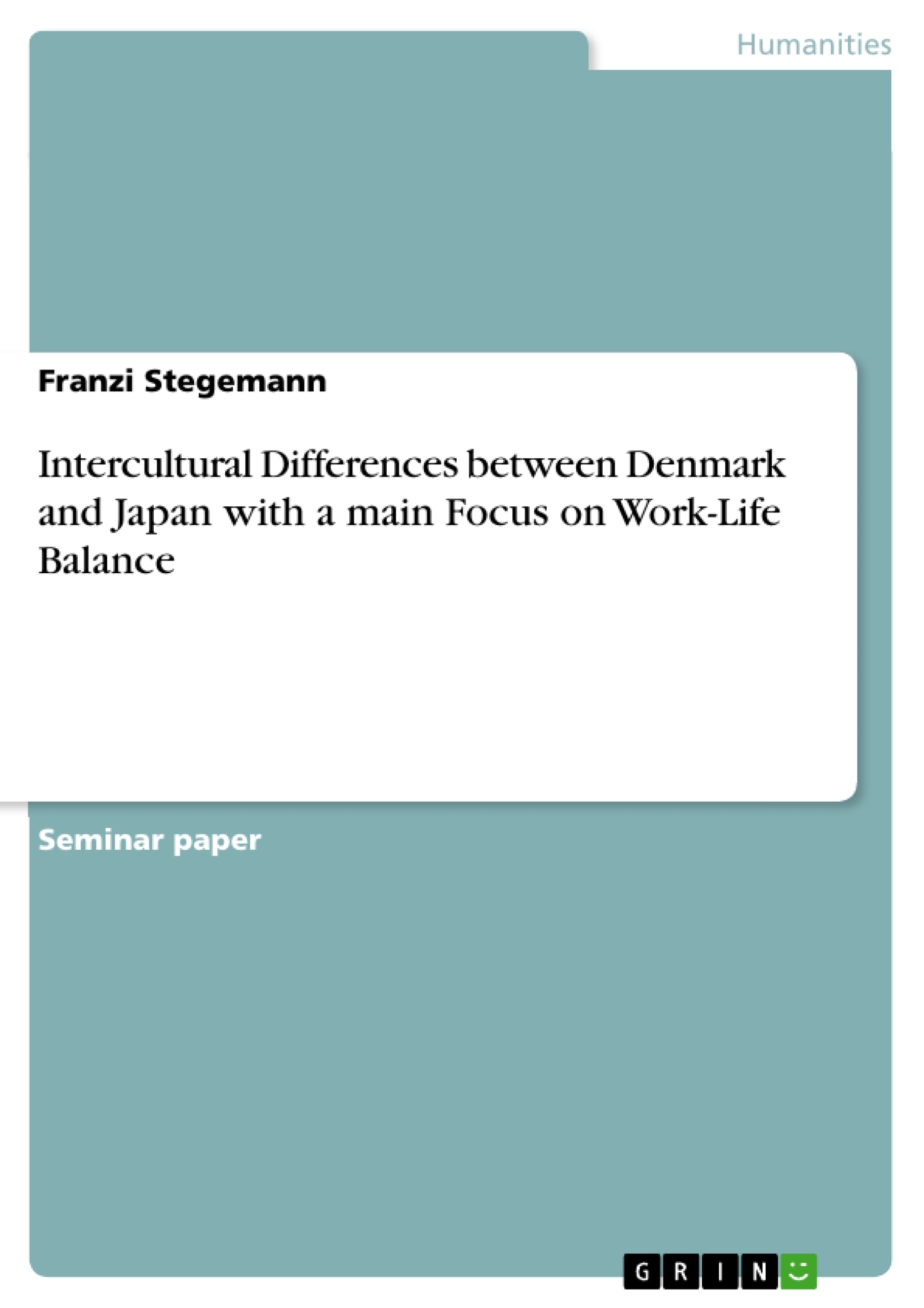This term paper examines the Work-Life Balance in Denmark vs. Japan. According to you Hofstede's Dimensions the two countries are compared with a main focus on the dimensions Power Distance, Individualism, Masculinity and Uncertainty Avoidance.
After a theoretical introduction to Hofstede’s intercultural dimensions, I will apply some of them specifically to the two countries and highlight the differences and similarities. Followed by a brief explanation of the often used term Work-Life balance. The second part, I will elaborate further on the topic of Work-Life balance in relation to culture and, additionally, take up trends and developments to be expected in the near future. I will end this paper with a summary of the general results and findings.
Table of Contents
- Introduction
- Understanding the intercultural differences between Denmark and Japan through Hofstede
- The Six Dimensions of Hofstede
- Power Distance
- Individualism
- Masculinity
- Uncertainty Avoidance
- Long Term Orientation
- Indulgence
- Hofstede's Intercultural Model applied to Denmark and Japan
- Power Distance: Denmark versus Japan
- Individualism: Denmark versus Japan
- Masculinity: Denmark versus Japan
- Uncertainty Avoidance: Denmark versus Japan
- Definition of Work-Life Balance
- The Six Dimensions of Hofstede
- Trends and Developments in Work-Life Balance in Denmark and Japan
- Work-Life Balance in Denmark
- Work-Life Balance in Japan
- Conclusion
Objectives and Key Themes
This paper aims to explore the intercultural differences between Denmark and Japan, focusing on their respective approaches to work-life balance. Using Hofstede's 6-D model, the paper analyzes the cultural dimensions that shape these differences, highlighting similarities and contrasting aspects.
- Intercultural differences between Denmark and Japan
- Hofstede's cultural dimensions
- Work-life balance in Denmark and Japan
- Trends and developments in work-life balance
- Impact of culture on work-life balance
Chapter Summaries
- Introduction: This chapter introduces the concept of work-life balance through the contrasting idioms "Hygge" and "Karōshi," representing the Danish and Japanese cultures, respectively. It highlights the stark differences in work-life balance approaches between the two nations, setting the stage for the subsequent analysis.
- Understanding the intercultural differences between Denmark and Japan through Hofstede: This chapter provides an overview of Hofstede's Intercultural Model, explaining its six dimensions: power distance, individualism, masculinity, uncertainty avoidance, long-term orientation, and indulgence. It then introduces the selected dimensions relevant to the comparison between Denmark and Japan.
- Trends and Developments in Work-Life Balance in Denmark and Japan: This chapter delves into the specific context of work-life balance in Denmark and Japan. It examines the trends and developments observed in both countries, exploring the factors that influence work-life balance practices and the challenges and opportunities they face.
Keywords
This paper explores the concepts of intercultural differences, work-life balance, Hofstede's cultural dimensions, Denmark, Japan, "Hygge," and "Karōshi." It examines the role of culture in shaping work-life balance practices and identifies the key factors driving trends and developments in this area.
- Quote paper
- Franzi Stegemann (Author), 2020, Intercultural Differences between Denmark and Japan with a main Focus on Work-Life Balance, Munich, GRIN Verlag, https://www.grin.com/document/537849



